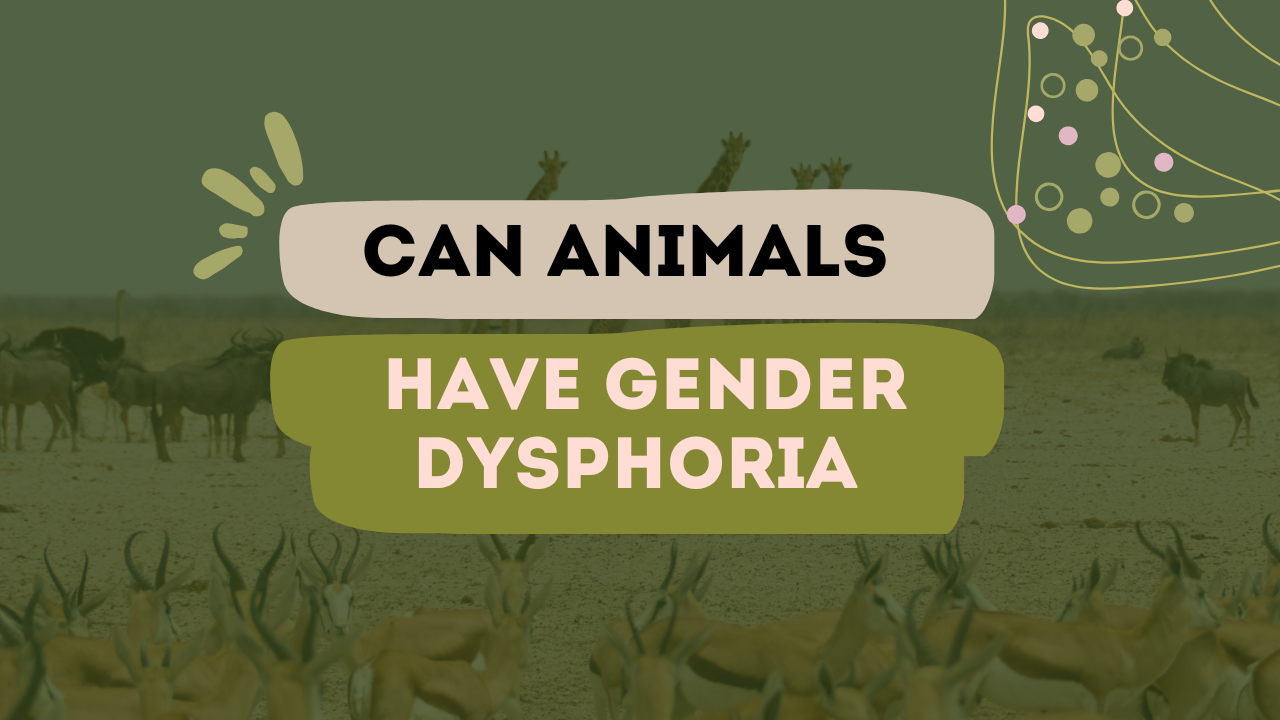Can animals experience gender dysphoria like humans do? Explore surprising animal behaviors, scientific insights, and what it all means for our understanding of gender in nature.
When people talk about gender dysphoria, they usually mean a human experience when someone feels discomfort or distress because their gender identity doesn’t match their body.
But what about animals?
Can they feel something similar?
Let’s dive into this question.
What Is Gender Dysphoria?
Gender dysphoria happens when someone feels like their body doesn’t reflect who they are on the inside.
It’s a recognized condition in humans.
People with gender dysphoria might feel anxious, sad, or uncomfortable with how others see their gender.
Sometimes, they may transition socially, medically, or both to feel more at peace.
Do Animals Even Have a Sense of Gender?
Here’s where it gets interesting.
Animals don’t think about gender the way humans do.
They don’t have gender roles based on society.
They don’t label themselves as “male” or “female” in a social sense.
But they do show behaviors that don’t always line up with their biological sex.
Surprising Animal Behaviors
Scientists have observed animals that:
- Act like the opposite sex
- Mate in same-sex pairs
- Change their sex entirely (yep, that’s a thing!)
Some examples:
🦎 Certain reptiles and fish can change sex based on the environment or social conditions.
🐧 Same-sex penguin couples have been known to raise chicks together.
🐶 Dogs have sometimes shown behavioral traits associated with the opposite sex.
Does this mean they have gender dysphoria?
Not necessarily but it does show that nature is more flexible than we thought.
What the Science Says
Most scientists agree that animals likely don’t feel gender dysphoria the same way humans do.
Why?
Because they don’t have the same self-awareness or social identity structures.
BUT…
Some researchers say animals might feel discomfort or confusion if their hormones are off or if their body doesn’t match typical patterns.
For example, animals with intersex conditions (born with both male and female traits) might behave differently.
Still, we can’t ask them how they feel so it’s hard to know for sure.
Can Animals Transition?
There’s no evidence that animals seek out changes to their body or social identity like humans do.
They don’t request surgeries or wear clothes to express gender.
But some animals do naturally change sex, like clownfish and wrasses.
That’s not gender identity it’s biology.
Still, it challenges the idea that sex is always fixed.
Why This Question Matters
Asking if animals can have gender dysphoria helps us:
- Learn more about nature and identity
- Understand that gender and sex are complex
- Respect people who experience gender dysphoria it’s real and deeply personal
Even if animals don’t have the same feelings, their behaviors show that diversity in identity isn’t just a human thing.
Final Thoughts
So… can animals have gender dysphoria?
Probably not in the same way humans do.
But they can break the rules of what we think males and females should act like.
Nature is wild, flexible, and often doesn’t care about our labels.
And that’s kind of beautiful.

